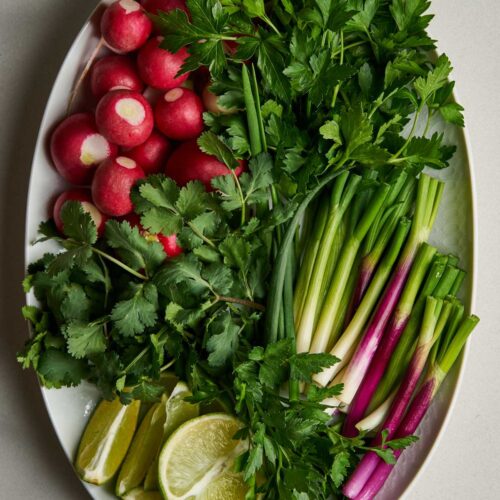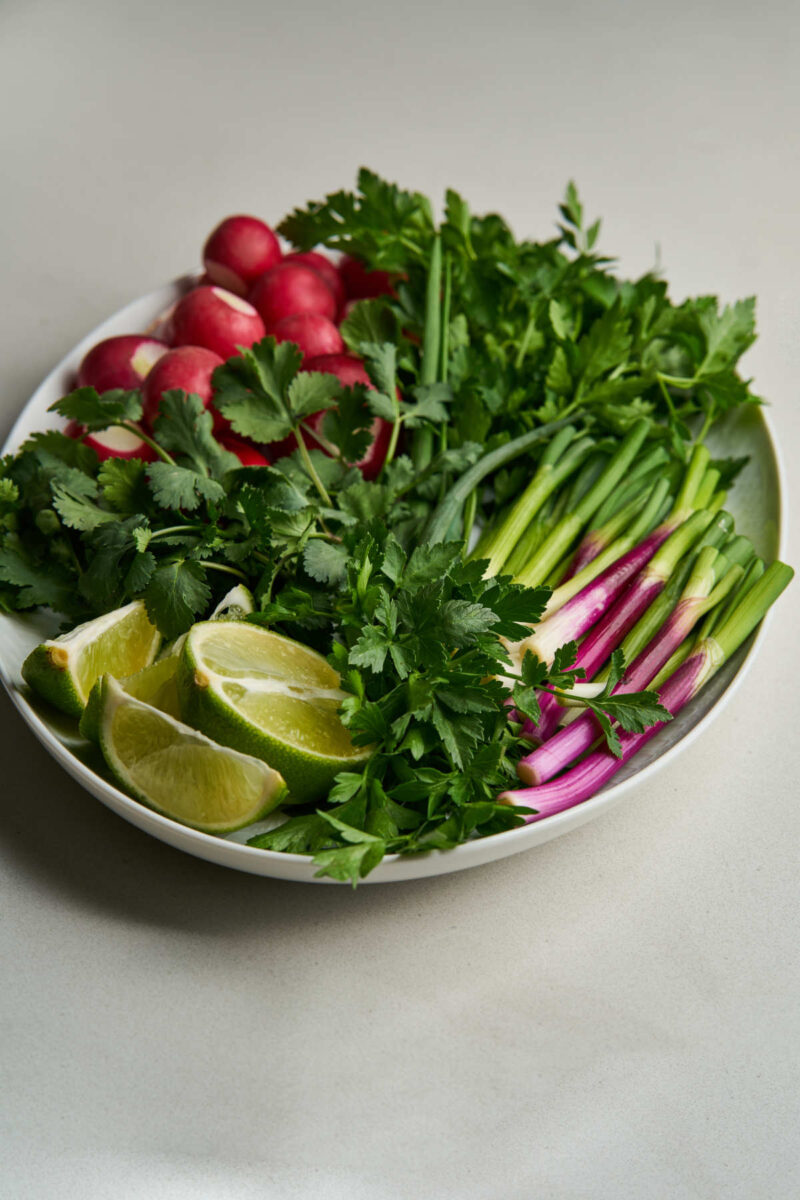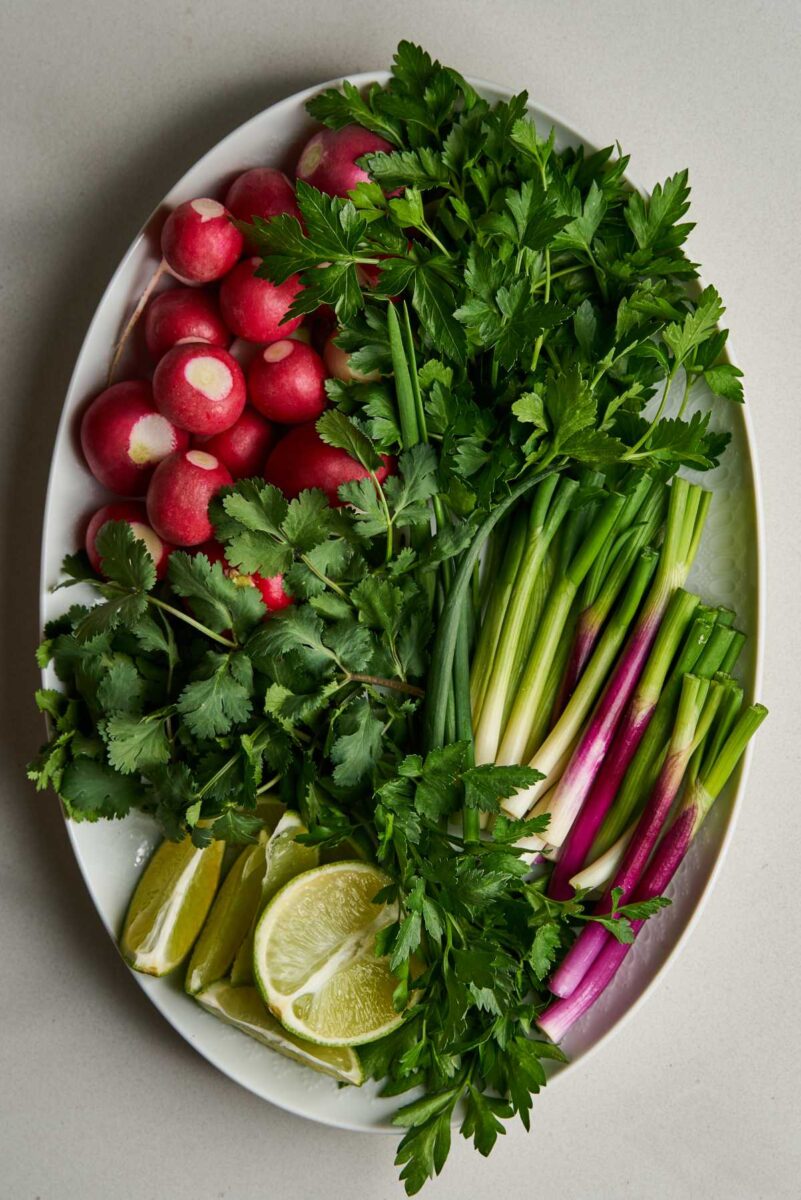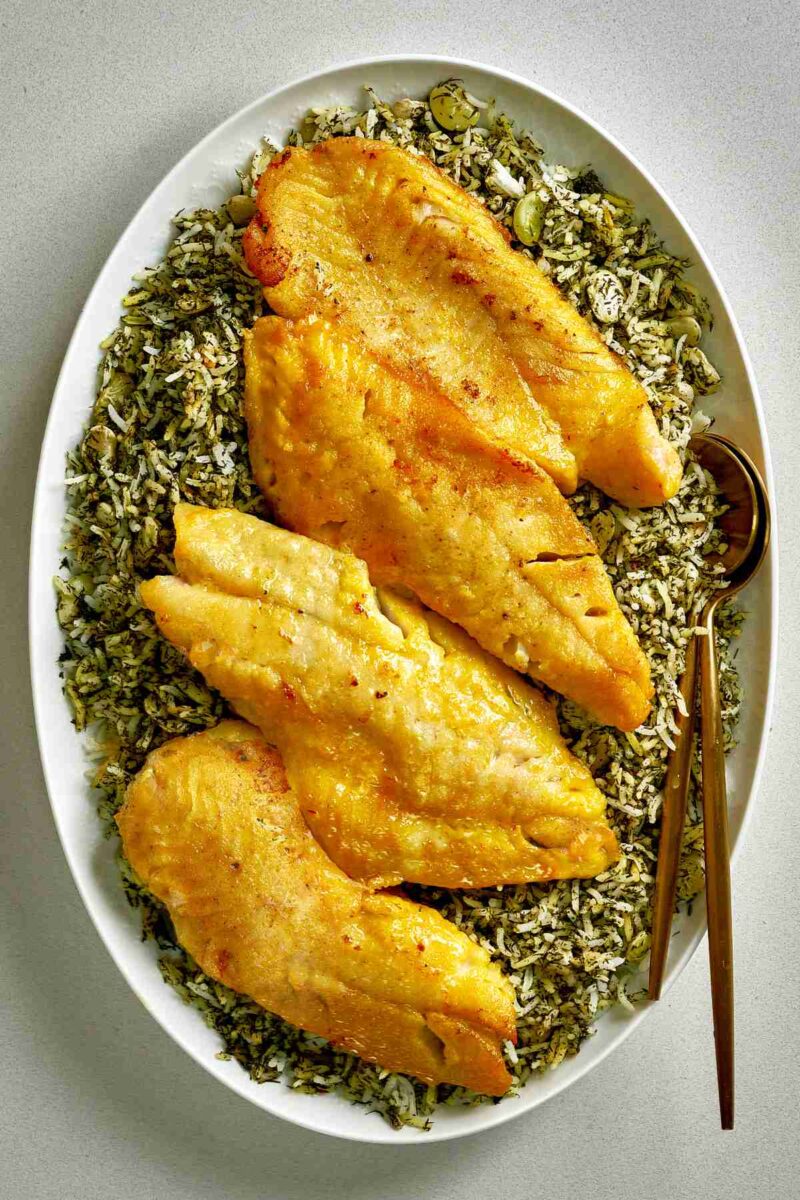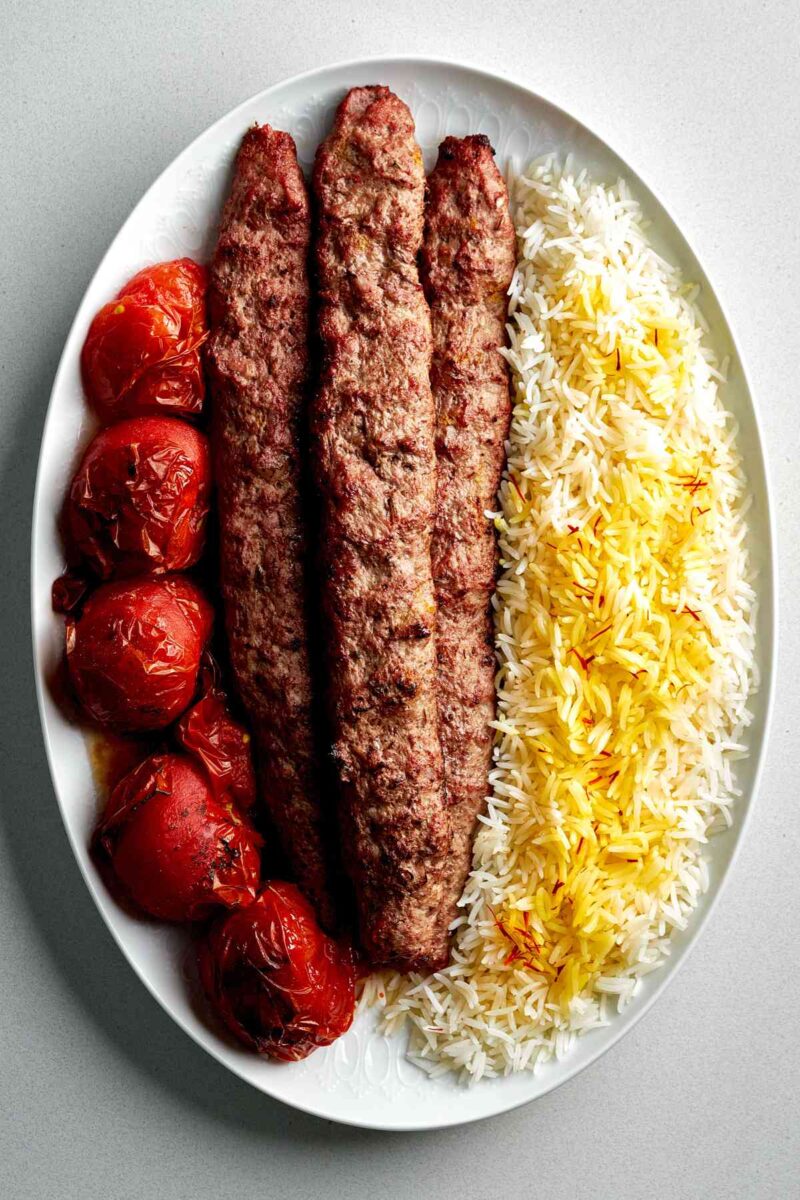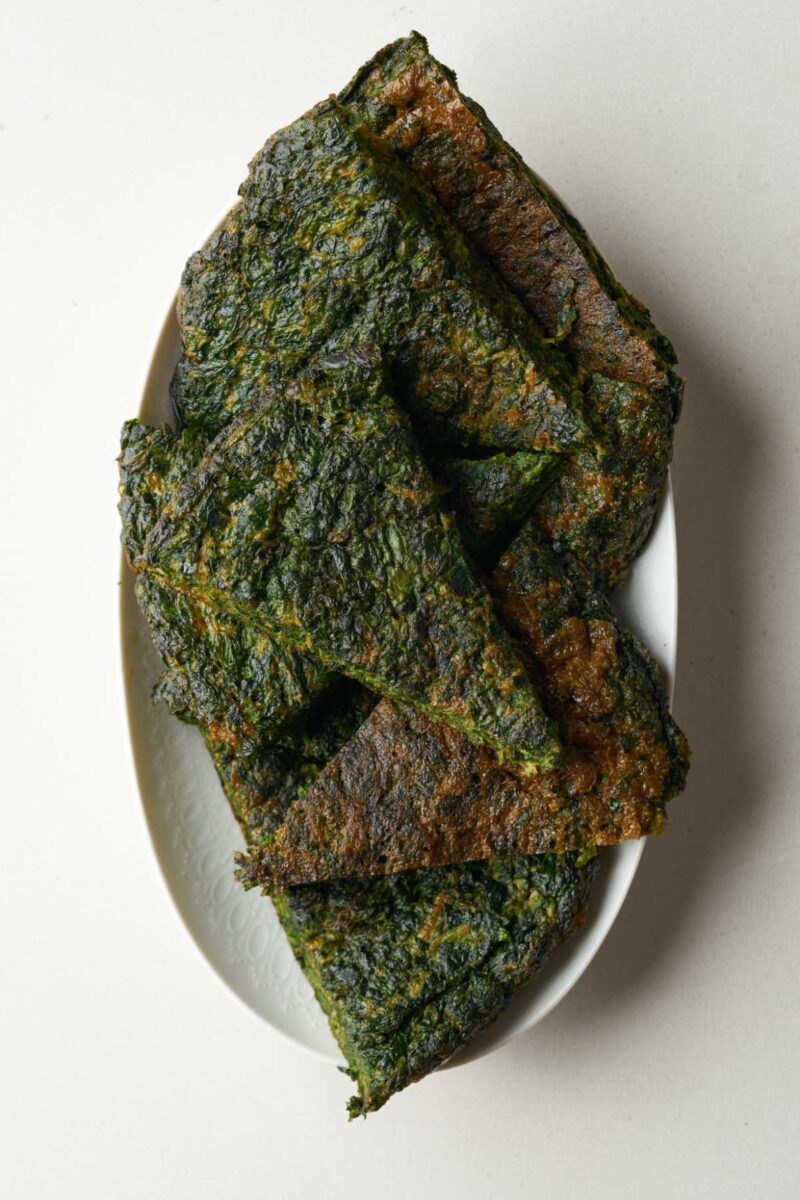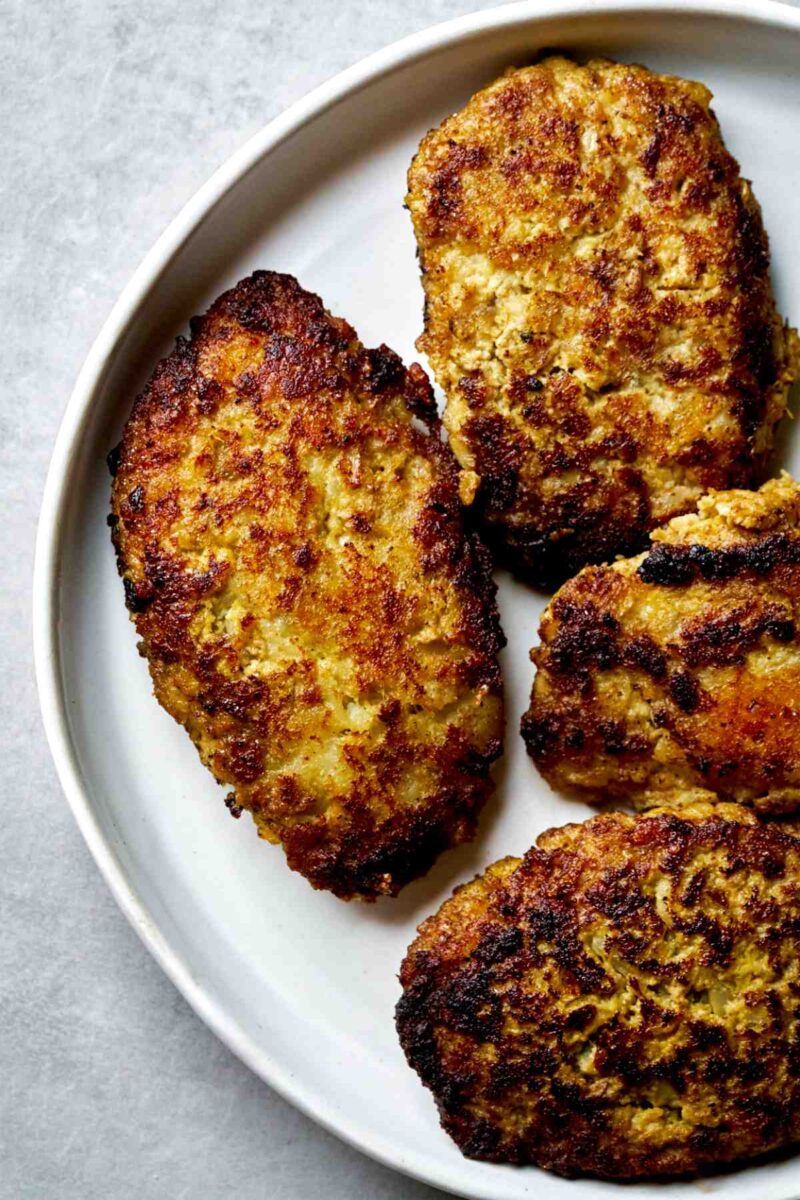Sabzi Khordan is a fresh platter full of greens and herbs served in Persian homes alongside the main dishes. Sabzi translates to ‘greens’ and khordan translates to ‘eaten.’ This aptly describes this platter as greens you eat along with a meal.
If you want to impress your guests, I’m explaining all you need to know to make a big and beautiful Sabzi Khordan platter. This side dish is a very important piece of Persian cuisine.
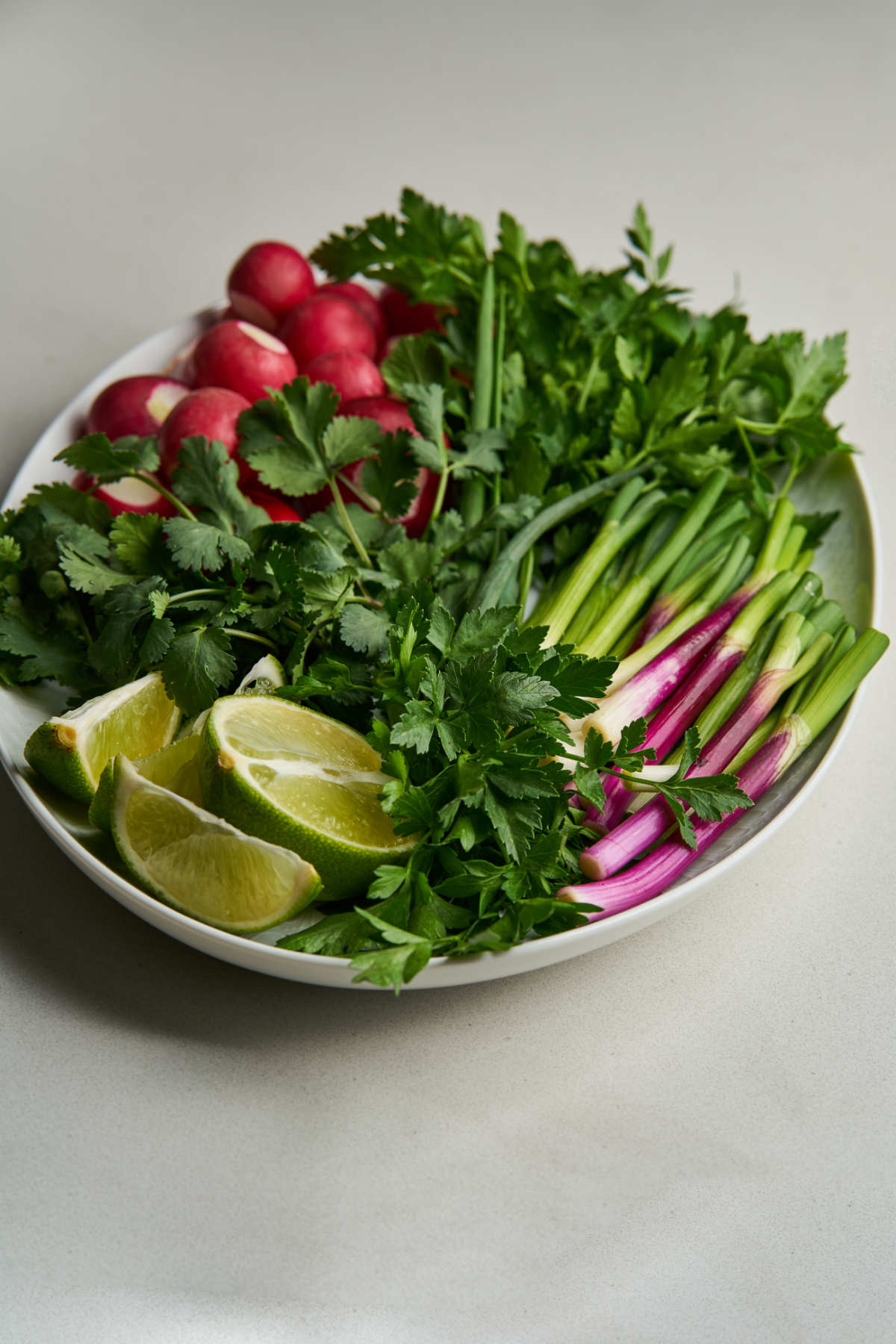
🌟More about this dish
Read more about Balancing Warm and Cool Foods in Persian Cuisine.
🧾What to include on the platter
To make Sabzi Khordan, you will need the following fresh ingredients:
See the recipe card for full information on ingredients and quantities.
Pro Tip
Many recipes online call for feta or nuts, but I’ve never seen these on the sabzi khordan platter in any of the Persian homes of family or friends. It could be that it’s more common in non-Jewish Persian homes, but in the homes of non-Jewish Persian friends, I still haven’t seen these ingredients.
👩🍳How to Prepare This Recipe
Sabzi Khordan is casual and rustic. However, there is a craft and care given to the preparation. Each item should be prepared as a reflection of its best self. The idea is that your guests shouldn’t have to look at anything they grab off this plate, knowing that it’s already prepared for enjoyment.
Start by thoroughly washing and drying all your herbs. I like to wash them separately and run them through a salad spinner to dry. This way, I can arrange them on the platter in separate areas.
Scallions – most of the dark greens are removed along with the root. Remove any dry layers around the outside. Try to find younger, thinner, scallions instead of mature, thick ones.
Herbs – large stems removed, but still be attached to tender stems if they are edible ones, like cilantro, parsley, basil, and mint. You shouldn’t be placing just leaves on the platter, but tiny clusters of leaves connected with tender stems. For tarragon, you can leave slightly longer stems, but remove anything woody.
Radishes – stems and roots removed, with the exception being baby radishes fresh from the garden that have edible roots and stems.
Limes or Naranj – Cut into wedges for easy squeezing and snacking. You can cut the top and bottom of the lime off before wedging, but it isn’t required.
Arrange all your ingredients on a large platter so that it’s easy for anyone to reach in and grab something. Serve with your favorite Persian dishes!
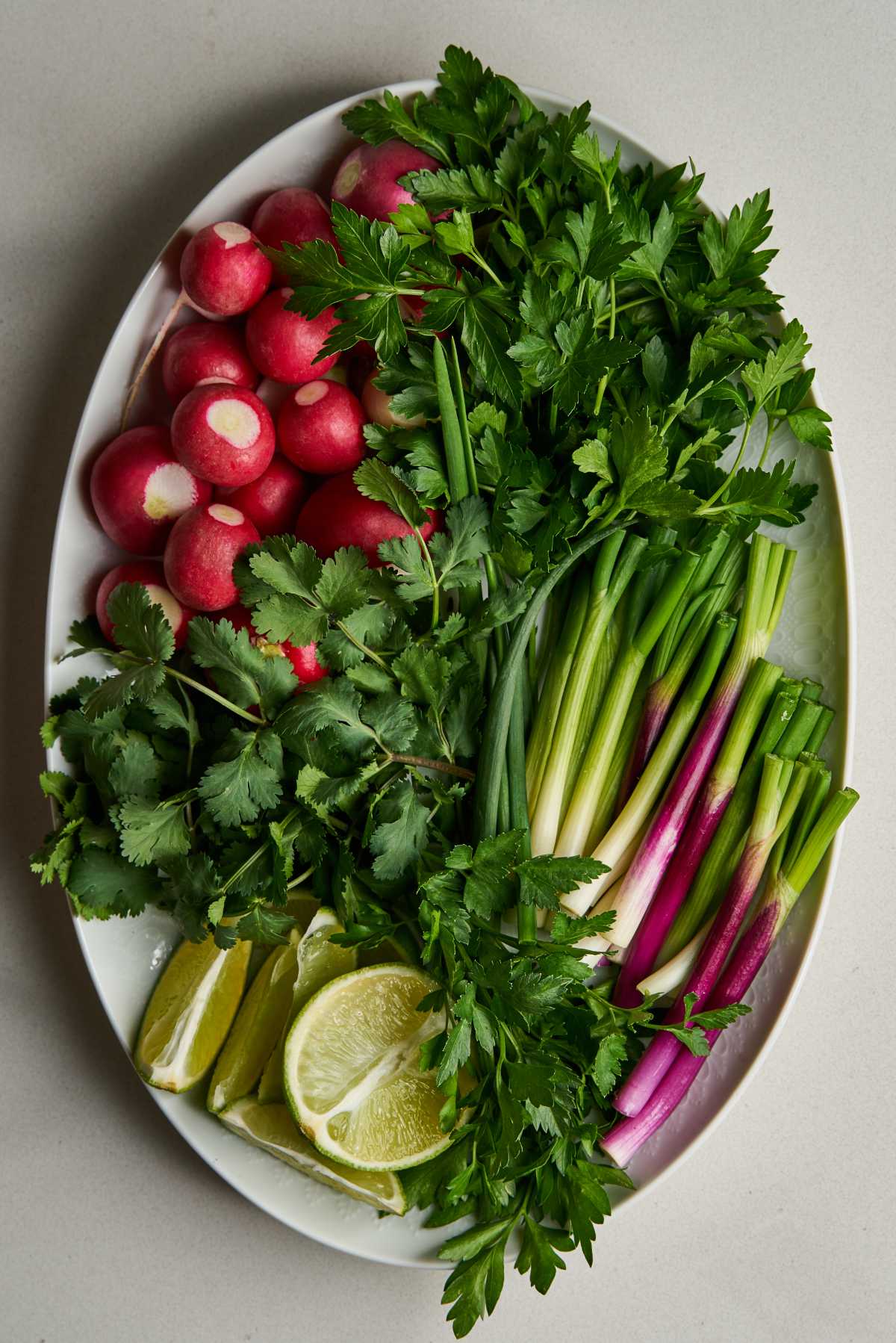
🍍Related Recipes
Looking for a main Persian dish to serve with Sabzi Khordan? Look no further!
I love hearing from you! You can also FOLLOW ME on INSTAGRAM, TIKTOK, and PINTEREST to see more delicious food and what I’m up to.
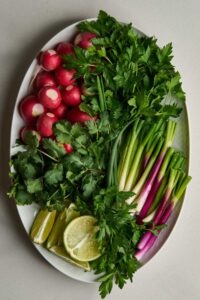
Sabzi Khordan
Print Recipe SaveIngredients
- 1 bunch radishes 1/2-lb.
- 1 bunch scallions 3-oz.
- 1 bunch cilantro 3-oz.
- 1 bunch parsley 3-oz.
- 1 bunch tarragon 1-oz.
- 1 bunch basil 2-oz.
- 1 bunch mint 2-oz.
- 2 limes or naranj
Instructions
- Start by thoroughly washing and drying all your herbs*.
- Scallions – most of the dark greens are removed along with the root. Remove any dry layers around the outside. Try to find younger, thinner, scallions instead of mature, thick ones.
- Herbs – large stems should be removed, but should still be attached to tender stems if they are edible ones, like cilantro, parsley, basil, and mint. You shouldn't be placing just leaves on the platter, but tiny clusters of leaves connected with tender stems. For tarragon, you can leave slightly longer stems, but remove anything woody.
- Radishes – stems and roots should be removed, with the exception being baby radishes fresh from the garden that have edible roots and stems.
- Limes or Naranj – Cut into wedges for easy squeezing and snacking. You can cut the top and bottom of the lime off before wedging, but it isn't required.
- Arrange all the items on a large platter so they are easy to tell each one apart from the others.

